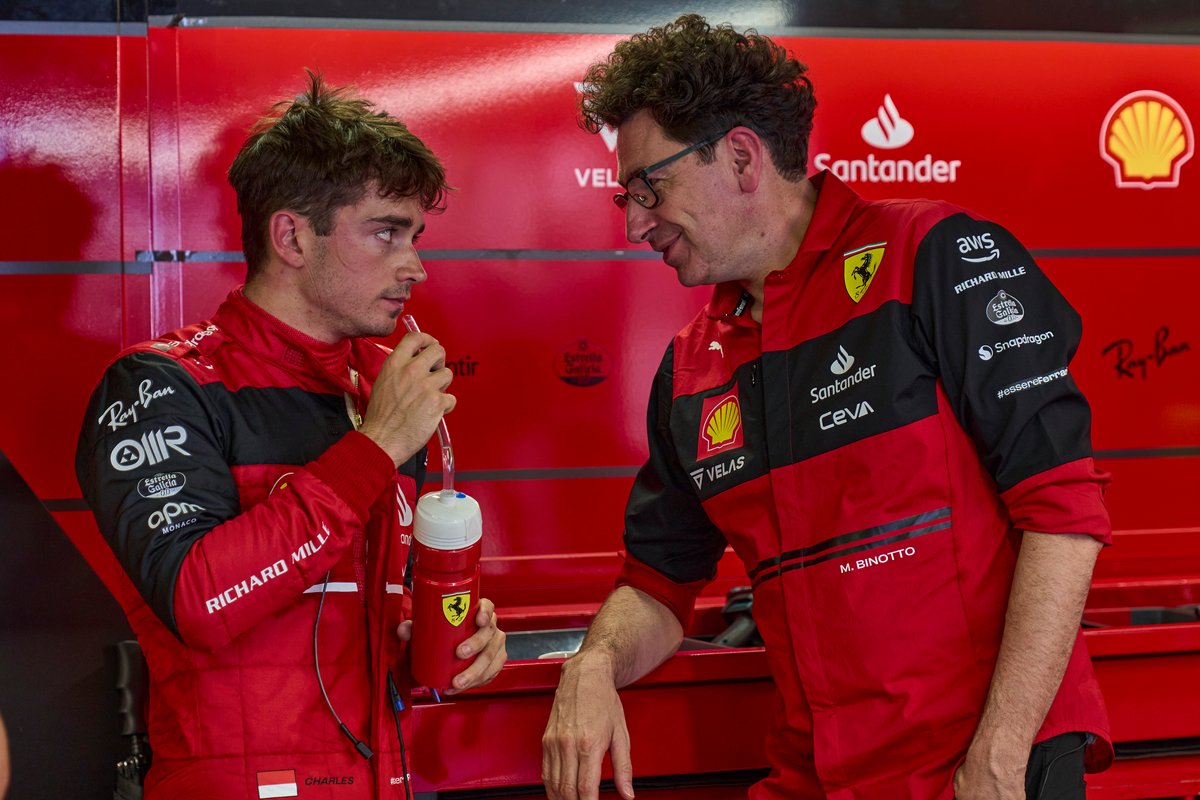
F1 launched its first team budget cap in 2021 after a big push by the FIA and the commercial rights holder to make the series more financially sustainable.
Teams were limited to spending $145 million under the budget cap last year before the figure was cut to $140m for the current season. It will fall by a further $5m next year, although there is an ongoing debate between teams about the impact of inflation and the current global climate.
This figure has a number of exclusions including driver salaries, but discussions have been ongoing for some time about the possible introduction of a separate cap that would cover the salaries of drivers and other key personnel.
Ferrari F1 chief Binotto said it was a matter that had recently been discussed by the teams, but he warned there was “not a straightforward solution, especially for the drivers’ salary cap”.
“We are discussing it and trying to understand what can be a solution,” Binotto said.
“It will not be in the short term, the reason for that is we already have contracts in place, and we cannot simply breach them. There are legal implications, to understand how to do that, so it's a discussion.
“It's an important one, we understand it and we recognise it will take time, but certainly we will go through the process.”
2023 was initially identified as a year where the salary cap could come into place, but a number of drivers have contracts in place that go far beyond this date. Charles Leclerc is tied in at Ferrari until the end of 2024, while Red Bull’s Max Verstappen has a bumper deal that runs all the way to the end of the 2028, reportedly worth up to €50m per year.

Red Bull team boss Christian Horner thought the motivation behind a salary cap was “well-merited” but the “application of it is tricky”, and warned against F1 becoming “an accounting world championship”.
“There's an awful lot of things that need tidying up within the existing cap that we have, that's being rolled out to being an engine cap as well,” Horner said.
“There’s all kinds of complications with that, again, with companies’ reporting structures, etc. So, there are many, many complexities, but I think we need to go beyond that.”
The push to consider a driver salary cap - previously discussed at $30m per year to cover both drivers, with any bigger payouts coming out of the team budget cap - has been supported by a number of teams, including Alfa Romeo and Alpine.
“I think it's the right approach to try to coordinate it with the budget [cap] and to have perhaps an allowance for this,” said Alfa Romeo F1 boss Frederic Vasseur.
“You could overshoot the limit and you will have to take part of your budget cap, I don’t know. But we have to find something like this because it's important for the sport.”
Alpine team principal Otmar Szafnauer added: “I'm in favour of adding that underneath a global cap so that the teams can trade off driver skill with updates, because ultimately both things bring performance on-track.
“And I think for us to have the latitude to be able to trade that off is probably the right thing.”
Salary caps operate in a number of other professional sports, including rugby and American football, which McLaren chief Andreas Seidl felt showed there was a “mechanism that could do the job” for F1.
“At the same time, I think it's important now to simply keep continuing the discussions behind closed doors,” Seidl added.
“There’s no point to now in public discuss how could that all work. So let's stay tuned.”







